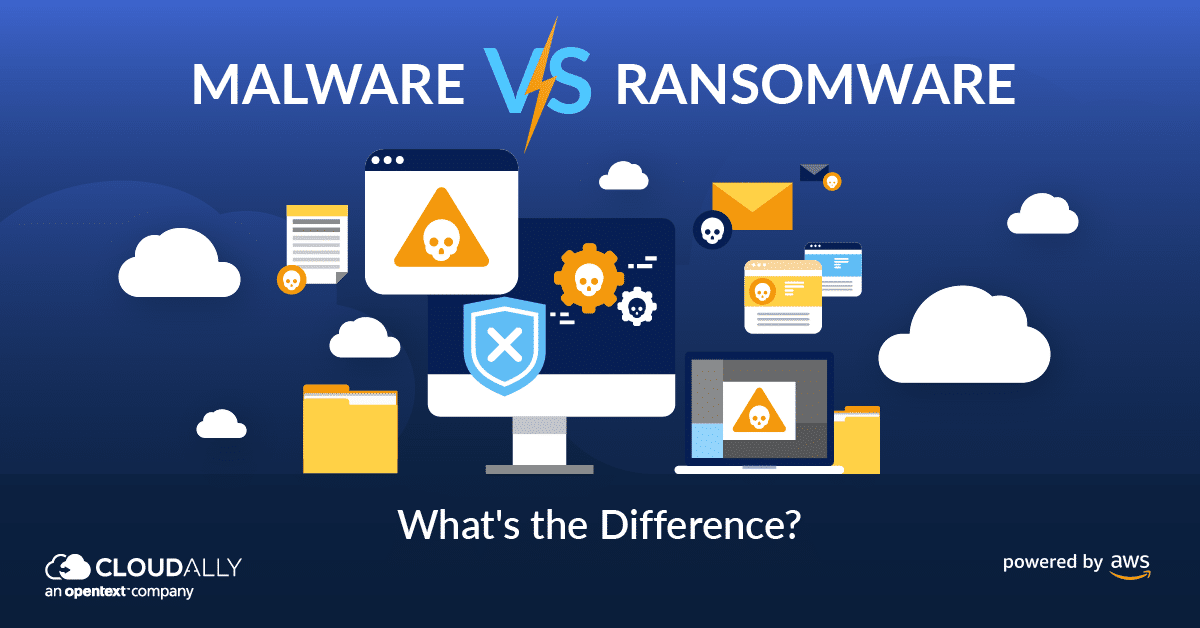In cybersecurity, two terms that come up constantly are ransomware and malware. They’re related, but they’re not the same. Many people use them interchangeably, which leads to confusion—especially when trying to understand risk or build a defense strategy.
This guide explains how ransomware differs from malware, why that difference matters, and what you can do to protect your systems.
Introduction
Cyber threats evolve daily, and both individuals and organizations face increasing risk. To build strong defenses, you need to understand the types of threats you’re dealing with. Two of the most widespread and damaging are ransomware and malware.
While ransomware is technically a type of malware, its intent, impact, and attack behavior make it a category that deserves its own attention. Knowing the difference helps you focus on the right safeguards and response plans.
What Is Malware?
Malware (“malicious software”) is an umbrella term for any program designed to infiltrate, damage, or disrupt systems—often without the user’s knowledge.
Malware aims to compromise data, breach system integrity, or interfere with operations. It comes in many forms, each with distinct behavior.
Common Types of Malware
• Viruses – Attach themselves to legitimate files and replicate across systems.
• Worms – Spread automatically across networks without user interaction.
• Trojans – Disguised as safe applications but open the door for attackers.
• Spyware – Secretly monitors user activity and captures sensitive data.
• Adware – Displays unwanted ads and may track behavior.
Each type operates differently, but their primary goal is the same: undermine confidentiality, integrity, or availability.
What Is Ransomware?
Ransomware is a form of malware built for one purpose: extortion. It encrypts files, locks systems, or steals sensitive data—and the attacker demands payment to restore access.
Ransomware attacks are highly disruptive, often shutting down operations entirely until systems are restored or rebuilt.
Types of Ransomware
• Encrypting Ransomware – Encrypts files and demands payment for the decryption key.
• Locker Ransomware – Locks the user out of the system entirely.
• Scareware – Uses fake warnings to push victims into paying for unnecessary fixes.
• Doxware (Leakware) – Steals sensitive data and threatens to leak it publicly unless a ransom is paid.
Because these attacks generate fast cash, ransomware remains one of the most dangerous and prevalent threat types today.
Key Differences Between Malware and Ransomware
1. Intent and Impact
• Malware has many purposes—spying, stealing credentials, damaging systems, hijacking devices, etc.
• Ransomware has a singular motive: financial gain through extortion.
Ransomware’s impact is immediate and severe, often shutting down business operations entirely.
2. Delivery Methods
Both spread through:
• phishing emails
• malicious attachments
• infected websites
• software vulnerabilities
But ransomware campaigns rely heavily on social engineering, crafting messages designed to pressure victims into opening the payload. That’s why anti-phishing defenses and user training are critical.
Mitigation Strategies
Preventing Malware
• Install reputable antivirus tools to detect and block malicious files.
• Apply system updates and patches to remove exploitable security holes.
• Educate users on phishing and safe browsing habits.
Preventing Ransomware
• Regular, secure backups so data can be restored without paying attackers.
• Enforce security policies such as MFA and least-privilege access.
• Use network segmentation to limit the spread if one system is compromised.
The Evolution of Cyber Threats
Attackers continuously evolve their methods. Ransomware-as-a-service, zero-day exploits, and automated malware kits have made attacks more sophisticated and widespread.
This rapid evolution means cybersecurity strategies must evolve too—especially when ransomware incidents can cripple an organization in minutes.
Conclusion
Both ransomware and malware pose serious risks, but understanding their differences helps you respond more effectively. Malware encompasses many threats, while ransomware is a focused extortion tool capable of halting operations instantly.
With the right preparation—security audits, strong backup strategies, threat intelligence monitoring, and continuous training—you can significantly reduce your exposure.
Staying informed is your best defense. With proactive measures, organizations can stay resilient and protected against today’s rapidly evolving cyber threats.

